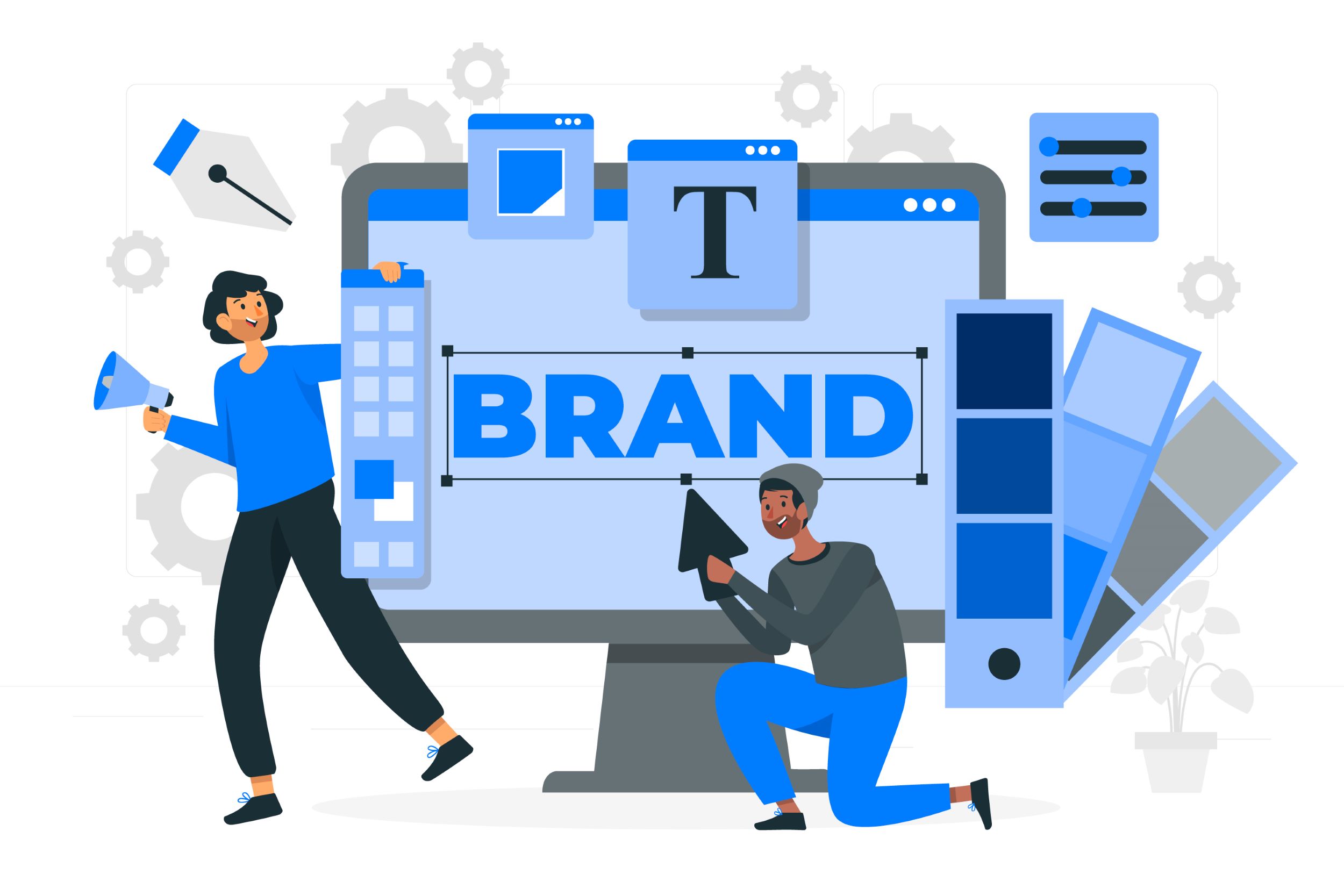
What is Brand Identity Design?
What do you think of when you hear your favorite brand? Maybe it’s the logo, the colors, the tagline, or even how it makes you feel. That’s brand identity. It’s everything that makes a company instantly recognizable and sets it apart from the competition.
Brand identity design is the process of developing the visual and emotional aspects that define a brand by the best brand designer in Dubai. It contains logos, colors, fonts, packaging, and other design elements. But it’s not just about the graphics; it’s about how these aspects work together to express a brand’s mission, personality, and values.
Think of it this way: if a brand were a person, brand identity design would be their outfit, hairstyle, and how they introduce themselves. It’s the first impression people get, and as we know, first impressions matter.
Brand Identity Design vs. Corporate Identity Design
Now, you might be wondering: isn’t brand identity the same as corporate identity? Not quite. While they overlap, there are key differences.
Corporate Identity is more focused on the internal structure and visual guidelines of a business. It’s about how a company presents itself in a professional context, such as through letterheads, business cards, and email signatures. It ensures consistency in how the company looks and operates internally and in formal communications.
In contrast, brand identity is more in-depth. It is about establishing an emotional connection with customers. Colors attract your eye on a product shelf, logos trigger identification, and tone of voice sounds relatable. Brand identity is focused on the consumer, whereas corporate identity is concerned with the internal, structured representation of the company.
Let’s use an example to make this clearer. Think about Coca-Cola. Its corporate identity might include official business documents and internal presentations. Its brand identity is the iconic red and white logo, the classic font, and the emotional messaging like “Share a Coke.” The brand identity is what makes customers connect with Coca-Cola on a personal level.
Why is Brand Identity Design Important?
Creating a brand identity is much more than simply looking nice; it’s also about being remembered and trusted. This is why it matters:
1. Builds Recognition
A strong brand identity helps people recognize your business instantly. Whether it’s the golden arches of McDonald’s or the swoosh of Nike, a memorable design sticks in people’s minds. This recognition builds familiarity, and familiarity often leads to trust.
2. Differentiates Your Brand
In a world when clients are inundated with options, standing out is critical. A distinctive brand identity distinguishes you from competition and explains why your company is exceptional. For example, Apple’s clean and minimalist design demonstrates its emphasis on innovation and simplicity.
3. Communicate Your Values
Your brand identity reflects what your business stands for. Bright, playful colors might signal fun and creativity, while darker tones and clean designs might convey professionalism and luxury. It’s a way to tell your story without using words.
4. Build Trust with Your Audience
Consistency in your branding builds trust. When customers see the same logo, colors, and tone of voice across your website, packaging, and social media, they feel like they know your brand. This consistency makes your business feel reliable and professional.
5. Increases Emotional Connection
People don’t just buy products—they buy into the feelings and values a brand represents. A well-crafted identity makes customers feel something, whether it’s excitement, comfort, or inspiration. That emotional connection turns casual buyers into loyal customers.
6. Supports Marketing Efforts
A clear and cohesive brand identity makes marketing easier. Whether you’re running ads, creating social media posts, or launching a new product, your brand identity acts as a guide. It ensures everything you do looks and feels like “you.”
How to Create a Strong Brand Identity
Developing a brand identity isn’t about slapping together a logo and calling it a day. It requires thought and strategy. Here are a few steps:
- Understand Your Audience: Who are you speaking to? Your brand identity should resonate with the people you want to attract.
- Define Your Personality: Is your brand playful, serious, adventurous, or elegant? Your identity should reflect this personality.
- Create Visual Elements: Design a logo, choose colors, select fonts, and create a style that feels authentic to your brand.
- Stay Consistent: Once you have your identity, use it consistently across all platforms and materials.
FINAL THOUGHTS
If you’re serious about building a business that stands out, investing in a strong brand identity is non-negotiable. It’s what turns a small business into a memorable name and helps you connect with your audience on a deeper level.